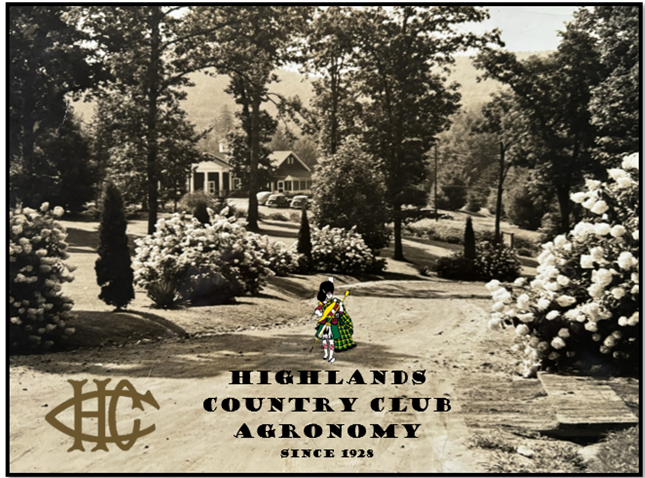Poa annua is a grass that can take advantage of just about any situation that presents itself. It is also able to adapt to a wide range of environmental conditions. You won't see any on putting greens in the deep south because it can't tolerate the heat. But other than that you can find it growing just about anywhere, including this plant, growing from a crack in the asphalt behind the maintenance building! You can even see where the grass is even producing seed head, in the photo above. It's that seed head that can make putting greens seem slow and bumpy this time of year. You can always identify bluegrasses by looking at the leaf tip. All bluegrasses have a "boat-shaped" leaf tip. If you look closely below, in the area I drew a circle around, you can see the tip of the grass looks like the end of a canoe.

I've received this question a few times regarding the new home that backs up to #11 tee boxes. This past winter, we took down a huge, dead Hemlock tree in this area. The tree was so far gone, that climbing the tree was hardly an option. Therefore, when it was cut, it did damage some surrounding Rhododendron. In addition to that, many of the Rhododendron in the area were leggy and needed to be cut back in order to be rejuvenated to form a denser growth habit. When our Golf Course Architect (Ron Forse) was on site, we looked at this area to discuss what to plant to create a nice buffer. Of course, Native Rhododendron was the answer because both sides of the home are surrounded by them. On Wednesday afternoon, 25 Native Rhododendron (5-6' tall) were planted by Club Staff in this area. This is a joint venture between the Club and the homeowner.
Finally, a wet spot popped up on #8 approach. Upon investigating, an old corrugated drain line was cut, causing the water in the pipe to come to the surface. With this repaired and re-routed, we are back in business!




